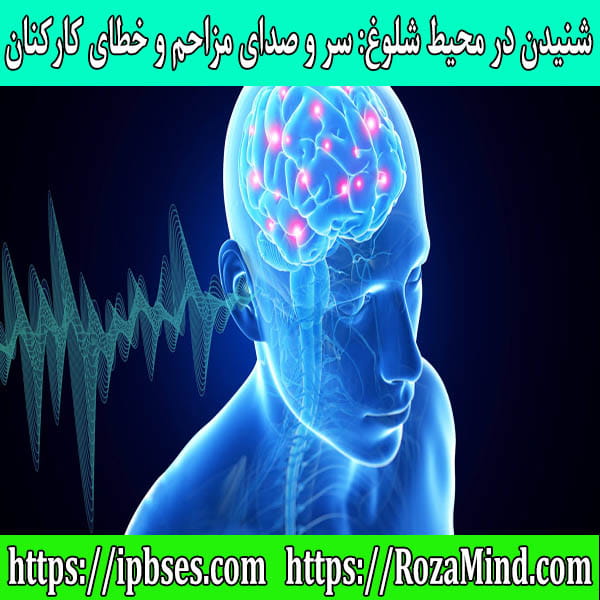پژوهشگران دانشگاه ماستریخت هلند در پژوهشی آزمایشی به بررسی تاثیر سر و صدای مزاحم بر شنیدن در محیط شلوغ بویژه محیط های درسی و کاری پرداختند.
روش پژوهش:
در این پژوهش آزمایشی 21 داوطلب 19 تا 28 ساله آلمانی زبان با میانگین سنی 22.2 سال شرکت نمودند. به عنوان محرک صوتی، فایلی از آدیو بوک همزمان 3 زن از 3 کتاب مختلف به مدت 24 ثانیه ارائه شد. همزمان، از شرکت کنندگان خواسته شد تکالیف اصلی آزمون را انجام دهند. دستورالعمل آزمون به طور شفاهی زمان پخش محرک صوتی به شرکت کنندگان ارائه شد.
نوار مغزی شرکت کنندگان با استفاده از سیستم QEEG دارای 63 کانال فعال و الگوی 10-20 صورت گرفت.
یافته های پژوهش:
- میزان حواس پرتی افراد حین انجام کار بر اثر شلوغی محیط، رابطه معکوس با میزان اهمیت تکلیف مورد نظر دارد.
- هر چه اهمیت تکلیفی کمتر باشد، حواس پرتی حین اجرای آن در محیط پر سر و صدا بیشتر است.
- الگوهای مغزی فیلترینگ عوامل حواس پرتی صوتی، به میزان زیادی تحت تاثیر ادراک فرد از میزان اهمیت تکلیف در دست اجرا است.
راهبردهای کارکردی:
- سر و صدای محیطی به عنوان عامل های مهم حواس پرتی و کاهش بازدهی در سازمان ها و نیز محیط های آموزشی، شناخته شده اند.
- میزان حواسپرتی در محیط شلوغ هیچ گاه صفر نیست.
- بر خلاف تصور رایج، الزاماً سرو صدای محیطی منجر به حواس پرتی کامل کنشگران نمی شود.
- هر چه میزان ادراک فرد از اهمیت کاری که می کند، بیشتر باشد وی به میزان کمتری تحت تاثیر سر و صدای محیط دچار حواسپرتی می شود.
Cortical processing of distracting speech in noisy auditory scenes depends on perceptual demand
Abstract
Selective attention is essential for the processing of multi-speaker auditory scenes because they require the perceptual segregation of the relevant speech (“target”) from irrelevant speech (“distractors”).
For simple sounds, it has been suggested that the processing of multiple distractor sounds depends on bottom-up factors affecting task performance.
However, it remains unclear whether such dependency applies to naturalistic multi-speaker auditory scenes.
Method:
In this study, we tested the hypothesis that increased perceptual demand (the processing requirement posed by the scene to separate the target speech) reduces the cortical processing of distractor speech thus decreasing their perceptual segregation.
Human participants were presented with auditory scenes including three speakers and asked to selectively attend to one speaker while their EEG was acquired.
The perceptual demand of this selective listening task was varied by introducing an auditory cue (interaural time differences, ITDs) for segregating the target from the distractor speakers. While, acoustic differences between the distractors were matched in ITD and loudness.
We obtained a quantitative measure of the cortical segregation of distractor speakers by assessing the difference in how accurately speech-envelope following EEG responses. That could be predicted by models of averaged distractor speech versus models of individual distractor speech.
Results:
In agreement with our hypothesis, results show that interaural segregation cues led to improved behavioral word-recognition performance and stronger cortical segregation of the distractor speakers.
The neural effect was strongest in the δ-band and at early delays (0 − 200 ms).
Conclusion:
Our results indicate that during low perceptual demand, the human cortex represents individual distractor speech signals as more segregated.
This suggests that, in addition to purely acoustical properties, the cortical processing of distractor speakers depends on factors like perceptual demand.
Keywords
EEG, Audition, Selective attention, Distractor speech, Perceptual demand.




